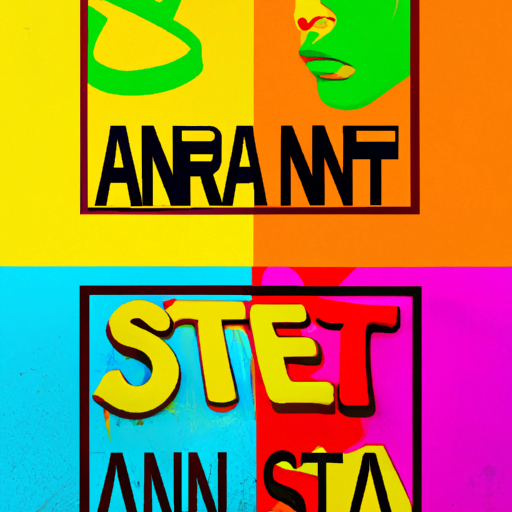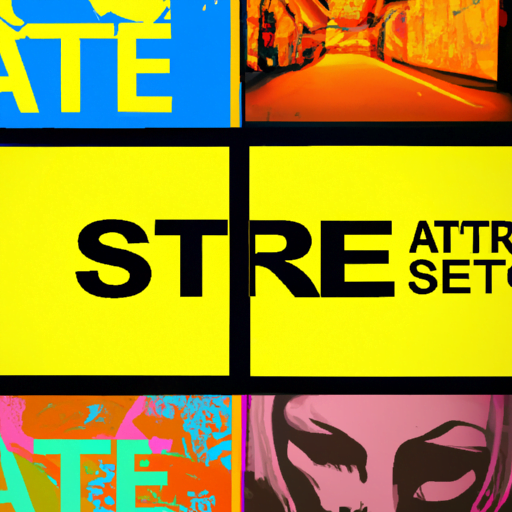
-
Table of Contents
- The Influence of Street Art and Graffiti on Graphic Design
- The Rise of Street Art and Graffiti
- The Intersection of Street Art, Graffiti, and Graphic Design
- 1. Typography and Lettering
- 2. Color and Composition
- 3. Visual Storytelling
- Case Studies: Street Art and Graffiti in Graphic Design
- 1. Shepard Fairey and the Obama “Hope” Poster
- 2. Banksy’s Influence on Streetwear Brands
- The Future of Graphic Design: Embracing Street Art and Graffiti
- Conclusion
The Influence of Street Art and Graffiti on Graphic Design

Street art and graffiti have long been considered as rebellious forms of artistic expression. However, in recent years, they have gained recognition and acceptance in the mainstream art world. This shift has not only impacted the perception of street art and graffiti but has also influenced various fields, including graphic design. In this article, we will explore the profound influence of street art and graffiti on graphic design, examining how these art forms have shaped and transformed the design industry.
The Rise of Street Art and Graffiti
Street art and graffiti have a rich history that dates back to ancient civilizations. However, it was during the 20th century that these art forms gained prominence, particularly in urban environments. Artists like Keith Haring and Jean-Michel Basquiat played a significant role in popularizing street art and graffiti in the 1980s, using public spaces as their canvas to convey powerful messages.
What sets street art and graffiti apart from traditional art forms is their ability to engage with the public directly. Unlike paintings displayed in galleries, street art and graffiti are accessible to everyone, blurring the boundaries between art and the urban environment. This accessibility has allowed these art forms to reach a wider audience and become a powerful tool for social and political commentary.
The Intersection of Street Art, Graffiti, and Graphic Design
Graphic design, as a discipline, has always been influenced by various art movements. Street art and graffiti are no exception. The bold and vibrant aesthetics of these art forms have found their way into graphic design, transforming the way designers approach their work.
1. Typography and Lettering
One of the most significant influences of street art and graffiti on graphic design is in the realm of typography and lettering. Graffiti artists have mastered the art of manipulating letters, creating unique and visually striking compositions. This approach has inspired graphic designers to experiment with typography, pushing the boundaries of traditional letterforms.
For example, the work of street artist and graphic designer Niels Shoe Meulman, known as “Shoe,” showcases his innovative approach to typography. His calligraffiti style combines calligraphy and graffiti, resulting in dynamic and expressive lettering. This fusion of styles has influenced many graphic designers, who now incorporate graffiti-inspired letterforms into their designs.
2. Color and Composition
Street art and graffiti are known for their vibrant color palettes and bold compositions. These elements have had a significant impact on graphic design, encouraging designers to experiment with color and composition in their work.
Take the work of Brazilian street artist Eduardo Kobra, for example. His large-scale murals are characterized by their vibrant colors and intricate compositions. Kobra’s use of color gradients and geometric patterns has inspired graphic designers to explore new ways of incorporating color into their designs, creating visually captivating and engaging compositions.
3. Visual Storytelling
Street art and graffiti often tell powerful stories through their imagery. From political statements to personal narratives, these art forms have the ability to convey complex messages in a visually compelling way. This emphasis on visual storytelling has influenced graphic designers to adopt a more narrative approach in their work.
For instance, the work of French street artist JR, known for his large-scale black and white portraits, has inspired graphic designers to incorporate storytelling elements into their designs. By using imagery to evoke emotions and convey messages, designers can create more impactful and memorable designs.
Case Studies: Street Art and Graffiti in Graphic Design
Several notable examples demonstrate the influence of street art and graffiti on graphic design. Let’s explore a few case studies that highlight this intersection:
1. Shepard Fairey and the Obama “Hope” Poster
In 2008, street artist Shepard Fairey created the iconic “Hope” poster for Barack Obama’s presidential campaign. The poster, featuring a stylized portrait of Obama with the word “Hope” underneath, became an emblem of the campaign and a symbol of political change.
This poster not only showcased the power of street art in political messaging but also demonstrated how street art aesthetics could be successfully translated into graphic design. Fairey’s use of bold colors, simplified forms, and strong typography made the poster instantly recognizable and memorable.
2. Banksy’s Influence on Streetwear Brands
Banksy, a renowned anonymous street artist, has had a significant impact on the world of streetwear fashion. His thought-provoking stencils and politically charged artworks have inspired numerous streetwear brands to incorporate street art aesthetics into their designs.
Brands like Obey Clothing, founded by Shepard Fairey, and Stüssy have embraced the rebellious and edgy nature of street art, incorporating graffiti-inspired graphics and typography into their clothing lines. This fusion of street art and fashion has created a unique and influential style that resonates with urban youth culture.
The Future of Graphic Design: Embracing Street Art and Graffiti
The influence of street art and graffiti on graphic design is undeniable. As these art forms continue to gain recognition and acceptance, it is crucial for graphic designers to embrace their influence and incorporate their aesthetics and principles into their work.
By doing so, designers can create visually engaging and impactful designs that resonate with a broader audience. The bold typography, vibrant colors, and visual storytelling techniques derived from street art and graffiti can breathe new life into graphic design, pushing the boundaries of creativity and innovation.
Conclusion
Street art and graffiti have transcended their rebellious origins to become influential art forms that shape various creative fields, including graphic design. Their bold aesthetics, vibrant colors, and powerful storytelling have transformed the way designers approach their work.
From typography and lettering to color and composition, street art and graffiti have left an indelible mark on graphic design. By embracing their influence, designers can create visually captivating designs that resonate with audiences and push the boundaries of creativity.
As the worlds of street art, graffiti, and graphic design continue to intersect, we can expect to see even more exciting collaborations and innovations in the future. The influence of street art and graffiti on graphic design is a testament to the power of art to inspire and transform.
